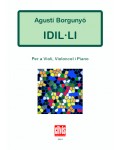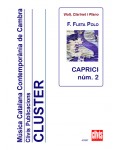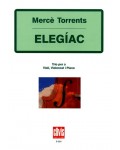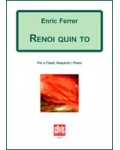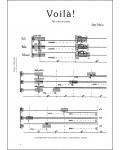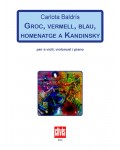
No products
Prices are tax included
Product successfully added to your shopping cart
There are 0 items in your cart. There is 1 item in your cart.
- English
- Castellano
- Català
Graffiti
DAC180
The content of the work Graffiti revolves around the desolation in which modern society lives because of habits imposed by a few people exercising power. In a way, graffiti art expresses this rebellion against the system, creating a world of fantastic graphics to escape the oppression of everyday life.
| Period | XXth Century |
| Subheading / Parts | Tres peces per a violí, violoncel i piano |
| Instruments | vl.vc.pf |
| Pages | 40 |
| Time | 12 min |
| Contents | Score and parts |
| ISMN | 979-0-3502-0653-5 |
| Price of print edition | 20,50€ |
| Edition | Digital |
The three pieces structuring this work were written and rewritten over a ten-year period, from 1972 to 1982. I began to work on it from the time of my father’s death in June 1972. I finished the first version in about 1974 and later revised it several times until, between 1981 and 1982, I composed the definitive version.
Although during the process of writing Graffiti, I always had my father’s death in mind, the content of the work revolves around the desolation in which modern society lives because of habits imposed by a few people exercising power. In a way, graffiti art expresses this rebellion against the system, creating a world of fantastic graphics to escape the oppression of everyday life.
For this reason, probably, and with a certain degree of unconsciousness, the work cannot be ascribed to any particular form of musical structure. Instead it is a series of consecutive melodic, chordal and even rhythmic sketches that evolve, following their own impulse.
F. Taverna-Bech







